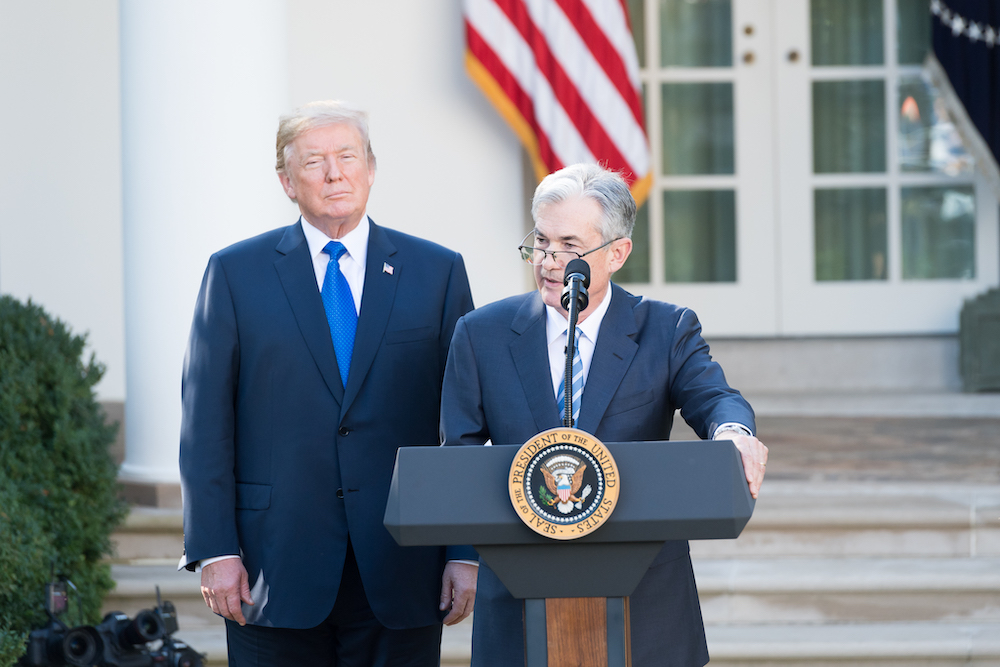
What a difference 12 months makes.
Last Summer we alerted you to the very real risk of rising interest rates and what to do to prepare your business and finances.
This Summer things have changed, creating a possible opportunity and a reason for caution.
Numerous unpredictable factors play a role, including China, tariffs, President Trump and one of his favorite targets for criticism. But we think there’s at least a few predictable outcomes that you can count on and take advantage of.
What’s Going On?
This time last June, the Federal Reserve was preparing to increase the Federal Funds Target Rate, which is the interest rate that every other interest rate is based on — from the interest on mortgages to car loans to business loans and even credit cards.
Not only were they raising rates, but they planned to raise two more times before the year was done plus multiple rate increases through 2020.
The stock market didn’t seem to mind, continuing to approach record highs.
Even as late as October 2018, Fed Chairman Jerome Powell said that the U.S. is experiencing “a remarkably positive set of economic circumstances” and “There’s really no reason to think that this cycle can’t continue for quite some time.”
But then things changed.
What Changed?
In December, the Federal Reserve hiked rates again. But this time, with the threat of a trade war with China in the background, the stock market nose dived. The Dow Jones had its worst December in generations, and the markets suffered their worst decline since the 2008 meltdown.
President Trump, who began to make criticizing Fed Chairman Powell a habit, said “The only problem our economy has is the Fed. They don’t have a feel for the Market, they don’t understand necessary Trade Wars or Strong Dollars or even Democrat Shutdowns over Borders.”
Ever since then, the Fed has softened its stance on rising interest rates, afraid that doing so will crash the market again.
And on June 4th of this year, Chairman Powell addressed the trade situation and the future of interest rates:
“I’d like first to say a word about recent developments involving trade negotiations and other matters. We do not know how or when these issues will be resolved. We are closely monitoring the implications of these developments for the U.S. economic outlook and, as always, we will act as appropriate to sustain the expansion, with a strong labor market and inflation near our symmetric 2 percent objective.”
“Fed speak” is known for being vague, but the general consensus is that Powell’s willingness to “act as appropriate to sustain the expansion” means rate hikes are over, and the next rate move is likely down.
What Happens Next?
Fed Chairman Powell and the Federal Open Market Committee meet 8 times a year to decide whether interest rates should go up, down or stay the same.
Their next chance to lower rates is June 18-19th and then again on July 30-31st.
The futures market predicts a 59% chance that the Fed will cut the interest rate at one of those meetings. And they also predict further rate cuts over the next year.
Where’s the Opportunity?
When interest rates go up, borrowing new money obviously gets more expensive. But current loans and credit cards with variable interest rates get more expensive as well.
Now that interest rates appear to be on the way down, it looks like borrowers are getting a reprieve.
And it gives you a few opportunities as well:
- You may have more time to improve your credit score. If you weren’t able to get a low interest rate loan or restructure existing loans because of your credit score, you now have more time to get your credit history in order. If you become a BUILD: member today, there is a 3-part series on boosting your credit score in weeks #5-#7.
- Wait for lower interest rates. If you’re thinking about getting a new loan, you may consider waiting until late Summer or even next year when rates are likely to be lower.
- Restructure your loans and get a fixed rate. When rates do come down, it’s the perfect time to restructure loans with higher interest rates — and make sure to get a fixed rate for any loans you plan to have long term.
Build the life you love,
The Builders at Wealth Factory

